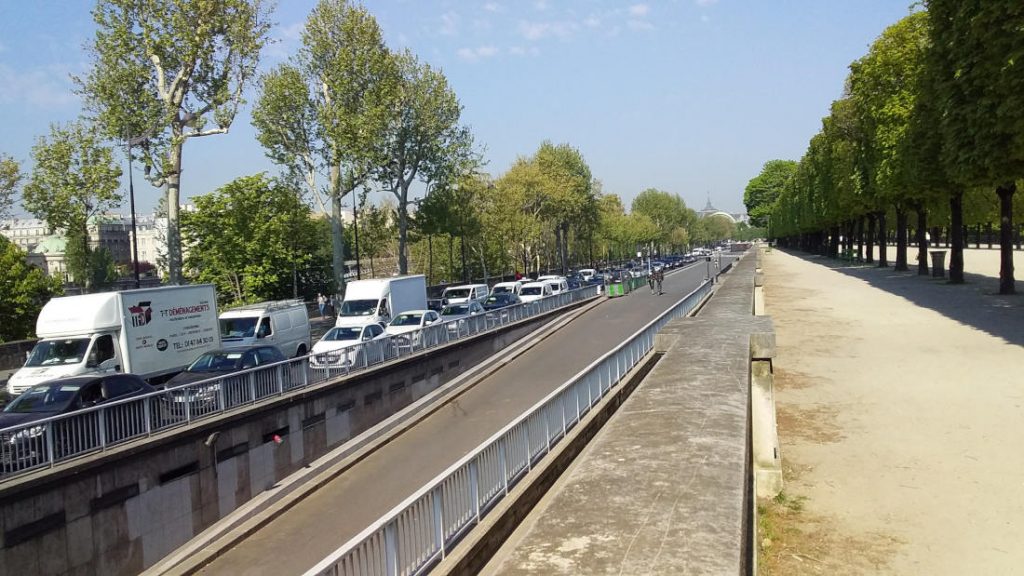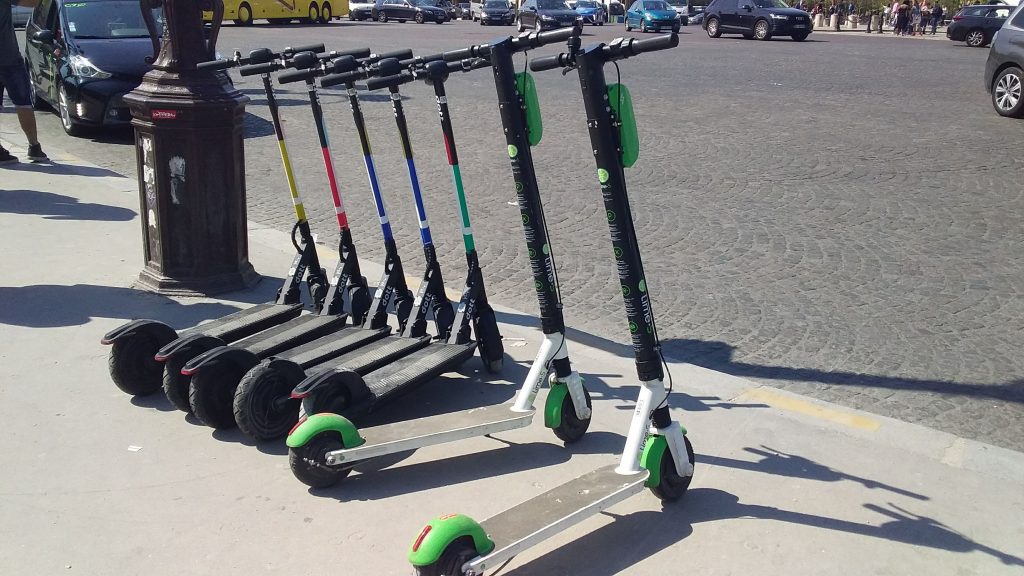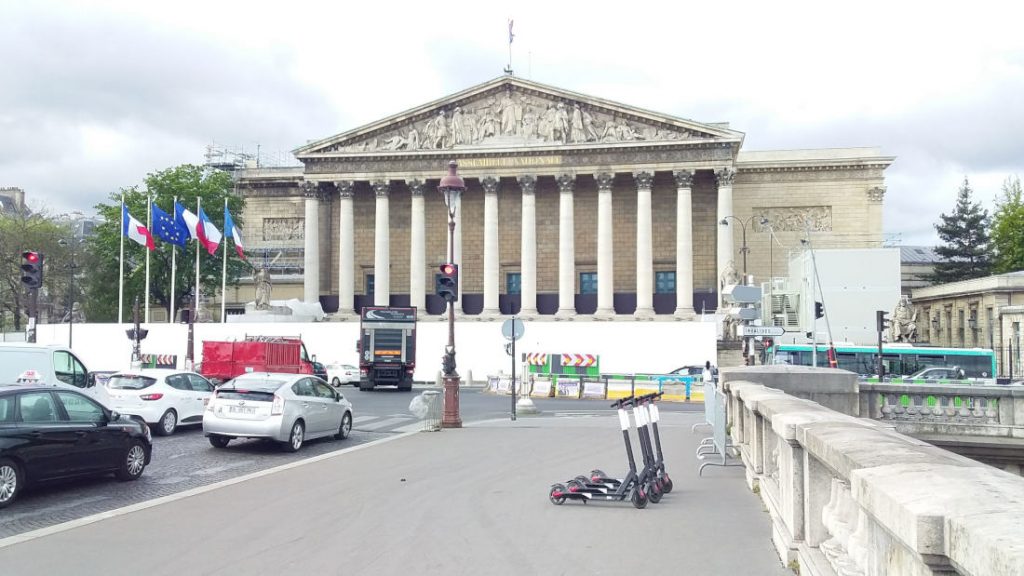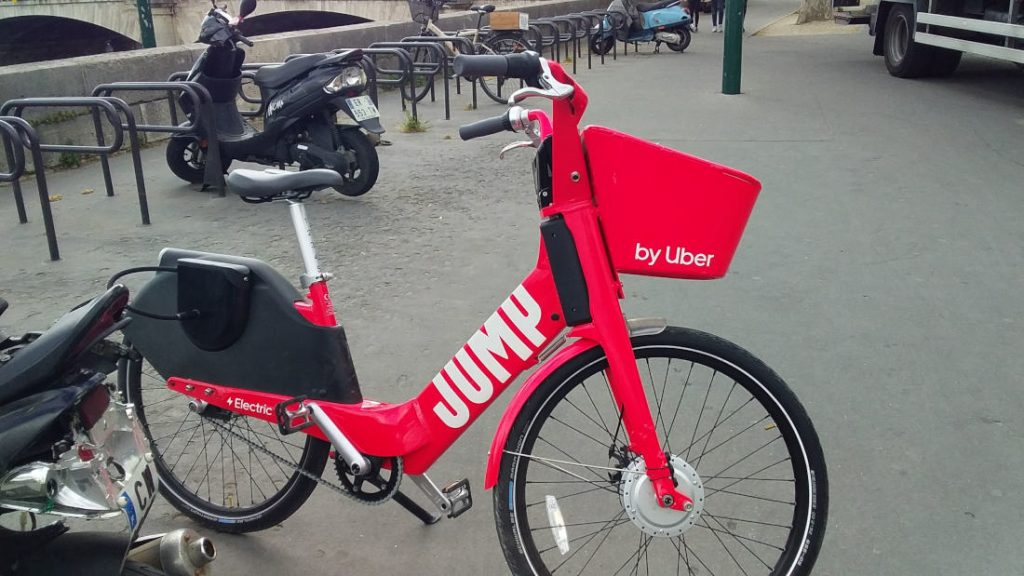Paris (ViaNews) - Electric transportation is becoming part of the dynamic of urban living, whether its shared or personal mobility, the goal effort is to combat climate change, improving the quality of life of people all around the world.
City centers are key to change, according to CIVITAS (CIty-VITAlity-Sustainability) more than 75% of Europe´s citizens live in cities. The initiative co-financed by the European Union that works towards a cleaner, better-connected transport solutions, also reveals alarming numbers on pollution.
It points out that 40% of CO2 comes from road transport, 70% of other pollutants come from urban traffic, and 3.7 million early deaths occur mostly in cities every year due to air pollution.

If you live in a Metropolis, then you've certainly felt, in some way, the impact of pollution and heavy traffic in your daily living.
Micro mobility solutions
Nowadays, electric bicycles have become part of cities landscapes. The e-bikes are perfect for a stroll in the park, practice sports, and basically to go anywhere in a short, medium range area, moving on an environment-friendly unit that you can either buy or rent.

But lately users have preferred a new "fun to ride" device to move in major cities, we are talking about the phenomenon of electric scooters.
How does it work?
The scooters are controlled with a mobile app where the user registers, creating a username and password, then the application shows the units available nearby, usually, the user needs to scan a QR code to unlock the scooter and begin a trip.
Once arriving at the destination, the scooter is left out on the streets or in a designated parking space, it varies according to the local regulation.
Easy to use, the e-scooters have taken cities by storm, with tourists as well as residents, who also have the option to buy their own, as it´s lightweight and affordable, choosing this new form of mobility.

Cities experiences on rental scooters service
Faster than anyone could have expected, the non-polluting vehicle gained huge popularity, in some cases, the rental services were made available to potential users even before governments had a regulation law in place for its use and for the companies that operate the rental service.
As its popularity increased, so did the incidents registered, with some people resulting injured mostly due to dangerous behavior from drivers towards pedestrians.
The debate on whether or not scooters could be a threat to pedestrians is far from over.
When a fatal accident involving an electric scooter happened in Catalonia, tension raised and Barcelona decided to ban completely the scooter rental service.
The Spanish city has 1.6 million residents and welcomes an estimated 32 million tourists a year.
Other cities are yet to elaborate legislation to regulate its operation while others are already establishing its own laws on the new personal vehicles, all differing from each other due to the different urbanistic characteristics of the cities, though most of them agree that scooters should not ride on sidewalks, a rule which has proven effective in minimizing accidents.
Laws may differ from city to city, but all share the same concern on safety.
The regulations in place at the moment, emphasize on some key factors.
- Establish a minimum age to use the vehicles, making clear where the scooters can circulate (bicycle lanes), and be parked, the use of a helmet by the driver is often required.
- The two-wheeled device should be equipped with led lights, in the front, and back, and a horn.
- Insurance is a must-have. Speed limits, new parking spaces destined for scooters only, so people don´t let them abandoned blocking the circulation of pedestrians or other vehicles, establishing responsibilities for companies, city councils, and users.
European cities & regulations on micro mobility
The largest concentration of the two-wheeled devices are found in major cities, but the tendency is to reach other cities.
In the United Kingdom, scooters are banned from the pavement and roads.
In Spain, Madrid has gone back and forward with the electric scooter´s rental services, removing the service in October 2018 to restate it in February 2019 under new regulations.
The e-scooters are banned from circulating in the sidewalks of the Spanish capital where 8500 units are available to users.
Eighteen different companies operate in Madrid: Lime, Ufo, Voi, Eskay, Bolt, Scoot, Acciona, Koko, Mobike, Rideconga, Flash, SJV Consulting, Ari, Alma, Motit4u, Tier, Wind, and Jump by Uber.
The latter has chosen the city to launched its services in Europe, adding 566 units to the Spanish market.
Uber landed in the French capital, Paris, only a couple of weeks after that.
E-Scooters in the french capital
Paris, the most visited city in the world, has a population of over 2.2 million residents, last year, the city broke a new record after registering that 40 million tourists visited the city and the Ile de France area.

The City of Light, as well as the most important cities in Europe, has suffered the "invasion" of the hugely popular scooters.
An estimated 15.000 scooters are run in the city by ten different companies since the new modality came into service, a year ago, but that number could easily double by the end of 2019 according to market projections.
While walking the streets of Paris it is easy to see the electric scooters riding in places where its use is not allowed, that is the case of Le Jardin de les Toullieres, between the Louvre and Place de la Concorde, where signs stand in its gates, unfortunately, ignored by some, leaving a trail of dust when passing by you.

French Minister of Transport Elisabeth Borne recently announced the ban of electric scooters, "trottinette" from the sidewalks in Paris effective from next September.
The fine for those who don´t respect the new regulation is 135 euros, the equivalent of 150 American Dollars.
In addition, 25km/h is the speed limit established for riders, and 2500 parking spaces for scooters are expected to be created by the end of the year.
Currently, a total of ten companies are operating in the Parisian city, the most recent operator to offer its services is Uber through its subsidiary Jump, also available as e-bikes, easily recognizable by its red bright color.
Uber joins Lime, Bird, Wind, Voi, Hive, Bolt, Tier, Dott and Flash, all offering similar prices and terms of conditions.

Lime
According to a new study conducted by the American, Lime, the first to operate in the Parisian city, and noted polling institute Odoxa shows that 11% of Parisians report using e-scooters either “frequently” or “from time to time”, while 59% of Lime users in Paris report using electric scooters to "at least partially reduce their reliance on personal motorized vehicles."
But Lime has given a step forward creating L’Académie Lime which offers free training courses to potential users on how to better ride the electric vehicles with the main focus on safety.
“This is a milestone event and one we’re happy to work alongside the city to provide in order to foster Paris’ reputation as a world leader in alternative urban transportation,” said Arthur-Luis Jacquier, General Manager of Lime in Paris.
Once participants finish the course, they receive a free helmet and an eco-friendly tote bag.
Personal transport vehicles in Latin America
In Latin America, the most recent country to adopt legislation on the use of scooters has been Argentina, a city with a population of over 15 million residents.
The law approved two weeks ago regulates the use of the personal mobility device, settling safety requirements, and establishes fines in case of inappropriate use.
The electric scooters are not allowed to ride on the pavement of the Argentinian capital, but its use is welcomed in the bicycle lanes.
The speed limit is 25km/h, and the device should transport one person only.
Parking spaces will be created with some areas being restricted to leave the scooters, that is the case of garage exits, for instance.
The use of a helmet and reflective clothes will also be required in the city of Buenos Aires.
The pilot program launched by the government is set to last for a year, during that time, 1000 units will be available for users, operative from July 2019, with an estimated autonomy of 20 to 30 km.
Mexico, Uruguay, Peru, Chile, and Colombia are among the Latin American countries which have also adopted the new micro mobility service.

